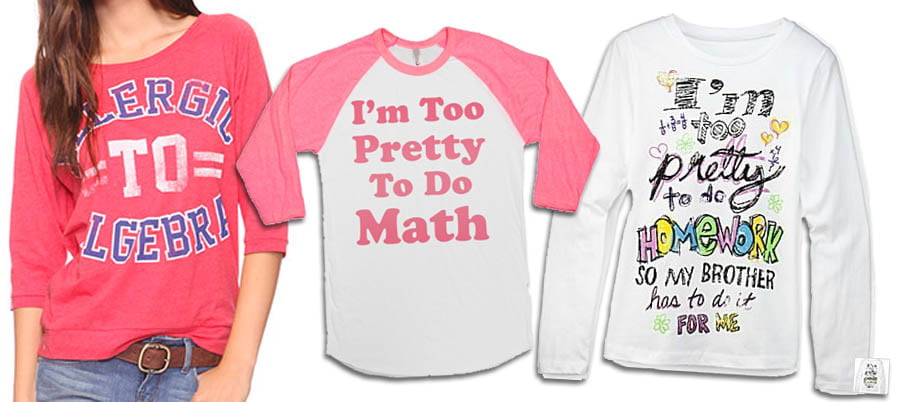A few weeks ago, on a Sunday, I was wading through one of the busiest malls in Chennai to find a polka dots footwear for my four-year-old nephew. After umpteen failed attempts in the kids section for the boys, I found one in the girls’ section. Just then, I saw a five-year-old boy on the verge of throwing a temper tantrum holding a pair of white tights covered in multi-colour hearts. The mother, her face turned red, grabbed a mickey mouse printed tights from the next aisle and convinced him he could have the mickey instead of the heart, or that he could pick up the camouflage trousers because “hearts are for girls.” For a 23-year-old cis-female, who had normalized buying for herself from the men’s section: shoes for her large feet, real jeans with pockets, round neck t-shirt because V neck in the women’s is deeper than the ocean, I did not pay attention to the symbolic conditioning of kids’ minds until now. As an intersectional feminist, who spends a lot of time thinking about the gender equalities for the adults, it took me time to realise that gendered kids clothing are more than just a colour war.
In India, where sex-education is a far cry, the terms ‘gender’ and ‘sex’ are often used interchangeably pointing the roots of what’s taught wrong. To throw some light, sex is what is physically in between your legs and gender is what you feel in the head. Most children start expressing their gender by choosing certain toys, colours and clothes that appeal to them when they are 2 or 3 years old. However, children don’t start to think of their gender as being fixed, or ‘forever’, until they reach 6 or 7 years old. This happens when they are old enough to understand what gender means by behaving in ways they think their environment expects them to. Neatly categorising these lines, at a tender age will not just lead to possibilities of gender dysphoria or a homophobic culture but it will also reinforce harmful stereotypes which the now-kids will carry to their adult life.
For a 23-year-old cis-female, who had normalized buying for herself from the men’s section: shoes for her large feet, real jeans with pockets, round neck t-shirt because V neck in the women’s is deeper than the ocean, I did not pay attention to the symbolic conditioning of kids’ minds until now.
Kids Clothes Cut For Adult Minds

Left: A full sleeve, round neck Superman t-shirt for 3-8 year old boy. Right: A full sleeve, round neck Supergirl t-shirt with a tie knot for 4-8 year old girl.
Everyone knows that women’s jeans have non-functional (read: fake) pockets. But why does a girl’s jeans right from the age 2, have non-functional pockets too? Why are her jeans so tight leaving her no buffer space to even sit on the floor, if and when she pleases? Where will she hold the rocks and leaves she picked up in the park? This is a 8-second search to find a similar design which is marketed predominantly to binary kids. While breaking one stereotype, that is, the girl can finally wear a SuperGirl t-shirt, a tie knot subconsciously conditions the five-year-old to be dressed in what society views as sexy for a 22-year-old, reinforcing another stereotype. The shape of clothing for male and female toddlers are cut to mimic the clothing of male and female adults.
Differently Sized For The Same Age
When my nephew tired the polka dots footwear, it was too tight for him, even though I bought them from the “5-years-old” shelf. It was then my sister so casually told me the sizes vary for the same age in boys and girls section and sometimes the prizes too. Pink tax, even for kids.
When my nephew tried the polka dots footwear, it was too tight for him, even though I bought them from the “5-years-old” shelf. It was then my sister so casually told me the sizes vary for the same age in boys and girls section and sometimes the prizes too. Pink tax, even for kids.
If the pet peeves of conscious adults, like gender stereotypes texts on the t-shirts, frills, bows, laces, bling, which restrict the movements for a girl are bypassed, there comes another: the length. When I scoured the internet, it was obvious just by the mock-up images that the brands want us to perceive that the girls’ clothes are smaller than boys of the same age, which in reality, is the same.

Naz Haider, a mom, on The Health Site says, “I recently compared a pair of girls’ shorts and boys’ shorts in the same age group, and while the boys’ one reached the knees, the girls’ shorts were glorified panties. Now, I am not shaming the short-shorts in any way, but the problem with such shorts is that it rides up, given that my child never sits still.”
While talking to the New York Times, Francesca Sammaritano, a kids clothing designer and assistant professor of fashion at Parsons School of Design said, “Especially in the toddler years, the boys have more pockets, they have more fun active clothes than the girls. There’s leg room for bending your knees. The differences in cut—boxier for boys, narrower and more revealing for girls—have nothing to do with differences in children’s frames. The body is the same, size-wise. You’re growing and developing in the same way until you reach six years, more or less.”
Also read: Children Exploring Their Sexuality Is More Common Than You Might Think
Harsh Reality In Stores
While messages like ‘princess’ and ‘stud’, already making the parents the authority of choosing the kids’ identity, it also weaves an age-old symbolism right into girls’ garments: you are dressed to decorate, not to do. And with boys? Refusing them to casually choose a garment which has a heart, an organ we all have, is conditioning them to cut off their emotions. Little boys are being told, from a very young age, that feelings don’t matter, or at least shouldn’t matter to them. They’re learning that feelings are for girls alone.

Even when the most conscious individuals, whether they believe in the binary or not, are increasingly involving in ‘gender’ reveal parties than ‘sex’ reveal parties when the parents are expecting and blurting out the questions, “If it’s a boy or girl?”, it blurs the difference between sex and gender. The big brands tap on that, conditioning kids to follow their birth gender right from the age of two.
So what can be done to change it? Better conscious labelling. Provide a child with a range of clothing options from sparkly tutus, to blue overalls, to pink shirts allowing them to explore without marketing only to a gender. The stores can move towards inclusive categories, instead of having a 2-5-year-old section for boys and girls separately, have a ‘2-5-year-old t-shirt’ section, ‘5-9-year-old trousers’ section.
Also read: Play Therapy: Trauma Therapy For Kids Needs To Be Fun
Buy kids clothing that speak to their actual interests rather than the interests they are presumed to have because of their genders. Let us, as adults, not set up the kids for a certain role.
Featured Image Source: Huffpost




